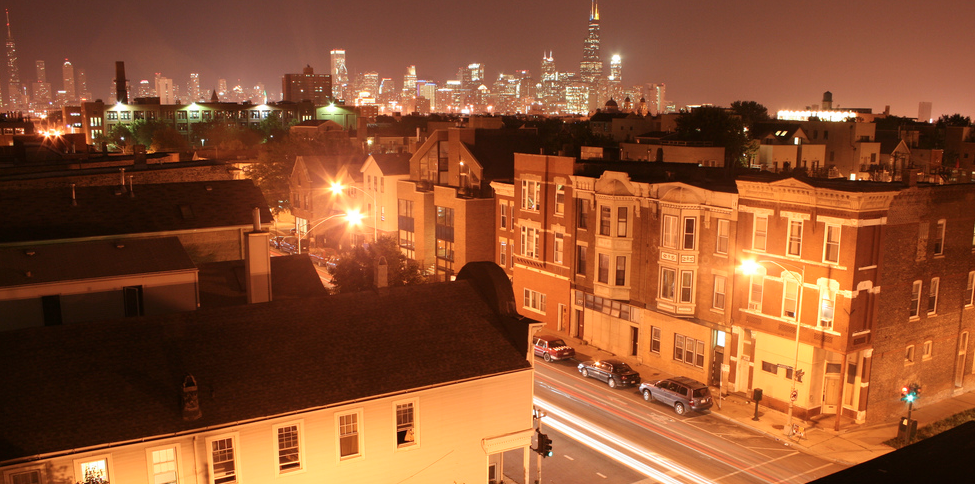As with any discipline, sociology, and particularly urban sociology, has its canon of studies and scholars that has shaped not just how researchers approach city life but also decisionmakers craft policy. From the Chicago School's early model of neighborhoods and concentric zones to Matthew Desmond's Pulitzer Prize-winning examination of eviction in Milwaukee, an understanding of inequality and marginalization has emerged.
But there's something missing, argues Junia Howell, a sociology professor with the University of Pittsburgh and Kinder scholar. Howell calls it "the unstudied reference neighborhood" in a recent article in the journal Sociology Compass. After naming some of the landmark pieces of neighborhood-focused research that have helped shape urban policy for decades, Howell notes, "with few exceptions, neighborhood studies only examine a small slice of urban neighborhoods." Over the years, scholars have spent time in Italian "slums," Puerto Rican neighborhoods and majority black neighborhoods, Howell notes, but white, middle-class neighborhoods "are rarely studied in the literature."
Such studies of marginalization have not gone unquestioned. In 2014, sociologist Alice Goffman found acclaim for her On the Run: Fugitive Life in an American City but she also drew criticism for her methods. But Howell brings up Goffman and other scholars to illuminate how the very framework of marginality often relies on an unspoken and uninvestigated norm. Judgments about life in "ghettoized communities," for example, go unchecked against the presumed alternatives in white, middle-class neighborhoods.
"The reoccurring references to presumed normal neighborhoods," in such work, "reinforces the notion that impoverished and marginalized communities are distinct and exist in stark juxtaposition to all other communities," writes Howell. "In directing the public's gaze to these communities alone, the scholarship identifies these communities as the problem that needs fixing."
This is problematic for a few reasons, argues Howell. For one, it hampers the research. "[S]cholars have limited their ability to illuminate how systemic structures perpetuate inequality," writes Howell. So while W. E. B. Du Bois is increasingly recognized for his foundational work in sociology, Howell argues, "the field still conceptualizes Du Bois' assertions as helping contextualize the Black experience and not as a theoretical framework in its own right that provides insights into all US neighborhoods."
The problem of largely unexamined "reference neighborhood" has implications beyond scholarship as well, spilling into policy and public discourse. "In short," notes Howell, "what empirical research identifies as a social problem has far-reaching implications in the real world."
The issue of neighborhood inequality, for example, "has less to do with what is lacking in marginalized neighborhoods," writes Howell, "and more to do with the distribution of city, state, and federal funds." But because of a predominance of studies that frame neighborhoods in hierarchies, passed down from the Chicago School onward, and that look for dysfunction within disadvantaged neighborhoods without investigating advantaged ones, neighborhood inequalities are taken as a sort of given, argues Howell.
A shift in research, then, could spark a shift in policy.
There's also reason to suspect that this sort of framing of marginality shapes public discourse as well. Recent research from Courtney Bonam, then with the University of Illinois at Chicago, and colleagues Caitlyn Yantis and Valerie Jones Taylor found that respondents asked to assess both black and white people, as well as homes in racially distinct neighborhoods, were in fact "more likely to racially stereotype spaces than people." Summarizing the work in Slate, Henry Grabar wrote, "...white participants were almost incapable of assigning middle-class status to houses in black neighborhoods."
As Howell notes, there are scholars both within sociology and outside it, including those working in critical race theory, who have helped push this forward. But with such high stakes, Howell argues more work is needed. "[U]rban sociologists need to recognize how our theoretical perspectives and methodological approaches have shaped not only our studies but also our very cities," concludes Howell. "It is time to problematize our assumptions, incorporate studies of middle-class White neighborhoods, and by doing so cultivate just and livable cities for all."

